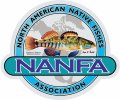Captive Care Notes: Least Chub (Iotichthys, Family Cyprinidae)
Although Utah regulations allow nongame native fishes to be seined by licensed anglers, in it unlawful to keep these fishes in aquaria without a special permit. Not that this should matter with the Least Chub (Iotichthys phlegethontis), since its rarity and conservation status clearly precludes any recreational collecting or husbandry. It's good to know, though, that should wild populations plummet, the species is easily propagated in captivity.
In 1979, biologist Thomas M. Baugh placed five male and five female Least Chub into a 72.5 l (19 gal) aquarium with undergravel filtration, 5 cm (2 in) of gravel, and densely planted with artificial broad-leafed plants and two 29 cm (11.4 in) long strips of plastic spawning grass. The fish were fed TetraMin and frozen brine shrimp twice a day. (In the wild, the Least Chub also eats algae.) A 15 percent water change was performed every week, during which an ounce of marine salt was added to the water. Spawning was not observed, but Baugh found 5-15 mildly adhesive eggs in the spawning grass at various times. He removed the grass to a gallon glass jar with water from the aquarium and mild surface agitation. Eggs began hatching five days later. The larvae adhered to surfaces but Baugh did not determine how. At time of spawning the water was between 17.7-18.8C (63.9-65.8F), daylight was 14 hours, pH was 7.6, and total alkalinity was 84.1 ppm. Baugh did not describe how he cared for the fry. He concluded his spawning report by saying that the Least Chub appears to be "amenable to culture in closed-system aquaria under artificial light." In an aquarium magazine article, Baugh noted that captive Least Chub are shy, easily frightened, and spend most of their time hidden in heavy vegetation in the back of the aquarium.
